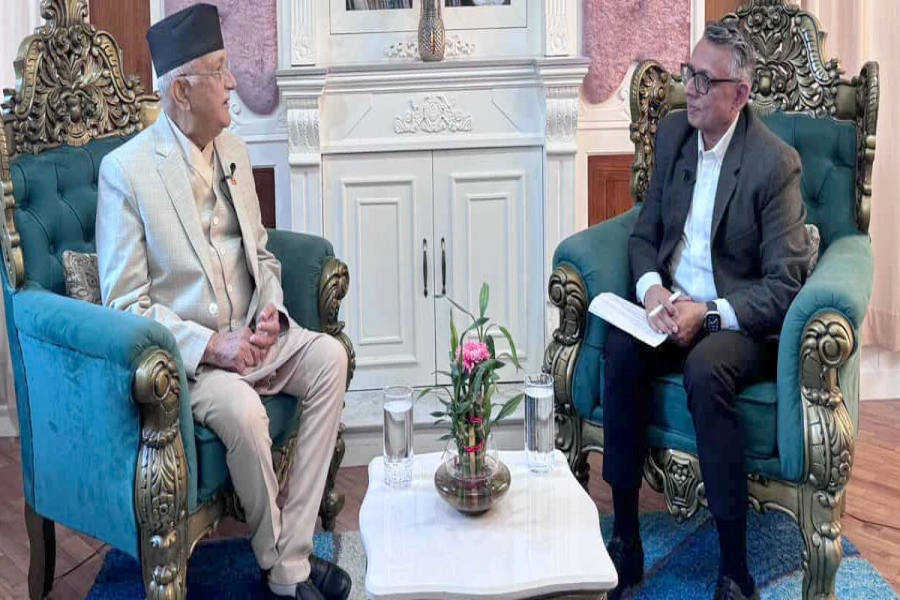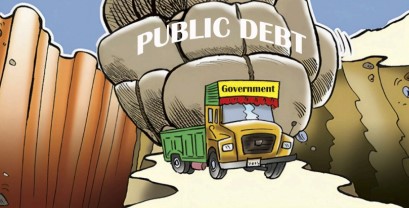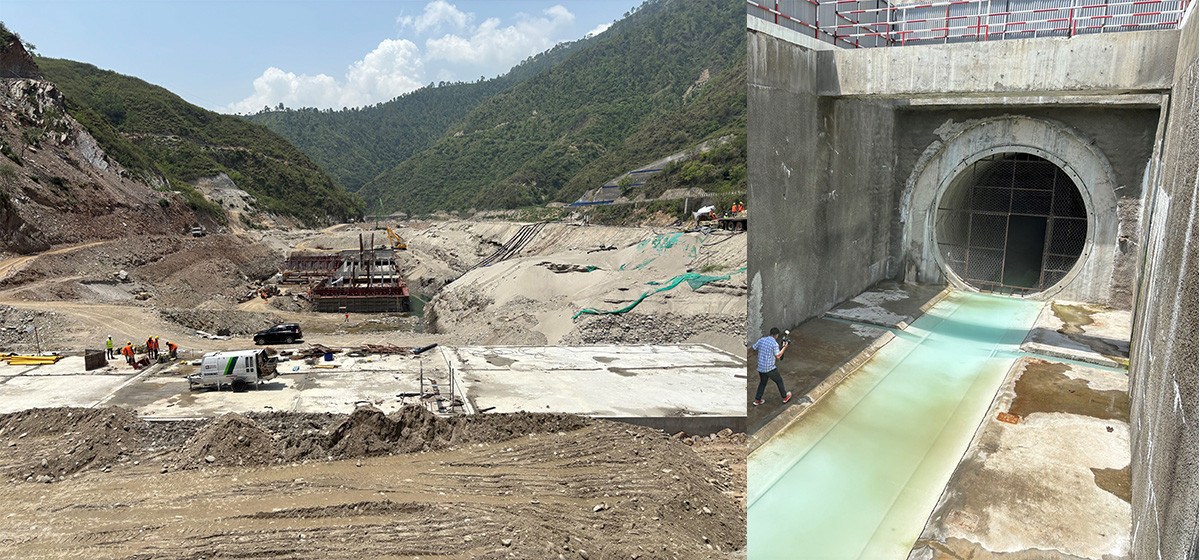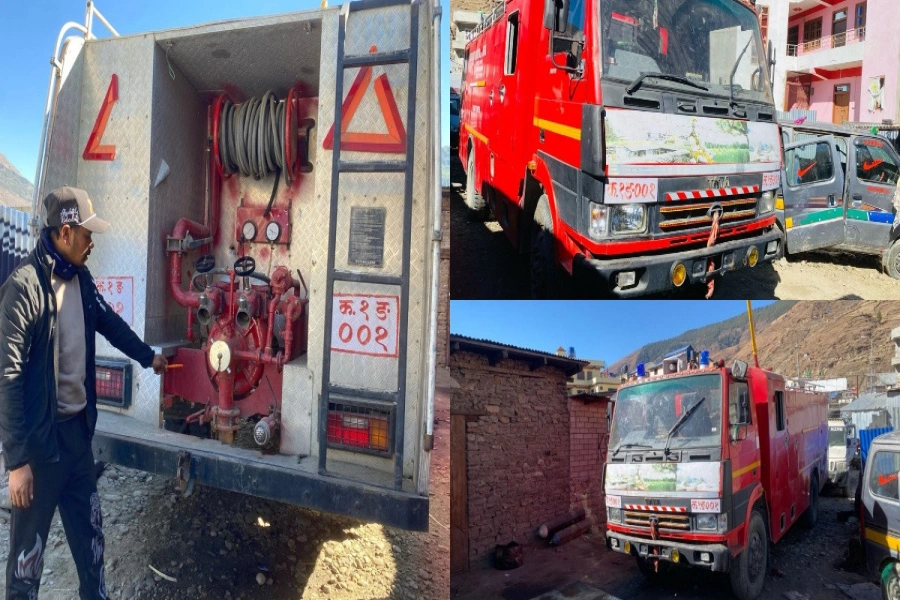The event was organized by Nepal Communitere in partnership with Field Ready, a non-governmental, non-profit organization that endeavors on providing humanitarian supplies in the field. It facilitated the event by training participants regarding the functioning and mechanism of the printer, its many benefits during disaster management and its drawbacks.
Andrew Lamb, advisor at Field Ready shared, "One of the big challenges for aid agencies and local organizations is importing the materials that aren't locally available. Therefore we're looking for collaborating with such organizations and figuring out on how we can be of help to them through 3D printing."
Lamb along with his colleague Mark Mellors also elucidated the several disadvantages of 3D printing. They explained the expensive and time consuming nature of 3D printing for mass production or manufacturing big-sized commodities, such as a bucket.
"It would take forever to make a single bucket," said Lamb. However, the process of "Injection Molding", which is a manufacturing process for producing parts by injecting material into a mold, was also explained of being capable of solving the problem.
The trainers also explained the cost effective nature of 3D printing for products such as an umbilical clamp by sharing their past experiences in disaster ridden countries like Haiti.
"For large scale production, 3D printing may not make sense, but for small scale production of intricate designs 3D printing is excellent. In Nepal, the use of 3D printing is still emerging and at this point, we are here to figure out its scope," Lamb elaborated.
"The event was an interesting one. It enlightened me regarding many uses of 3D printing which could be directed not only towards humanitarian purposes but also towards education in the future. Students could enjoy a more fun course by incorporating this technology in the learning process," shares one participant, Kuldeep Aryal from Build Change, an organization that works to save lives by designing disaster resistant buildings.
Katherine Weatherburn, country director at Nepal Communitere, said, "We are hoping this endeavor provided the participants with adequate understanding of the printer and hopefully they will also utilize it well and reap its benefits in the Nepal Communitere, once it arrives here."
Nepal Communitere works by collaborating with local organizations. Its services largely involve providing space for organizations to work in, and giving them the required resources—from a hammer to a 3D printer—and also help them network.
--------
What is 3D printing?
3D printing or additive manufacturing is a process of making three dimensional solid objects from a digital file. The creation of a 3D printed object is achieved using additive processes, in which an object is created by laying down successive layers of material until the entire object is created. Each of these layers can be seen as a thinly sliced horizontal cross-section of the eventual object.
How does 3D printing work?
It all starts with making a virtual design of the object you want to create. This virtual design is made in a CAD (Computer Aided Design) file using a 3D modeling program (for the creation of a totally new object) or with the use of a 3D scanner (to copy an existing object). A 3D scanner can also be used to make a 3D digital copy of an object.
Recently, many IT companies like Microsoft and Google enabled their hardware to perform 3D scanning, a great example is Microsoft's Kinect. This is a clear sign that future hand-held devices like smartphones will have integrated 3D scanners. Digitizing real objects into 3D models will become as easy as taking a picture.
To prepare a digital file for printing, the 3D modeling software "slices" the final model into hundreds or thousands of horizontal layers. When the sliced file is uploaded in a 3D printer, the object can be created layer by layer. The 3D printer reads every slice (or 2D image) and creates the object, blending each layer with hardly any visible sign of the layers, with as a result the three dimensional object.
Industrial printing
In the last couple of years, the term 3D printing has become more known and the technology has reached a broader public. Still, most people haven't even heard of the term while the technology has been in use for decades. Especially manufacturers have long used these printers in their design process to create prototypes for traditional manufacturing and research purposes. Using 3D printers for these purposes is called rapid prototyping.
Now, fast 3D printers can be bought for tens of thousands of dollars and end up saving the companies many times that amount of money in the prototyping process. For example, Nike uses 3D printers to create multi-colored prototypes of shoes. They used to spend thousands of dollars on a prototype and wait weeks for it. Now, the cost is only in the hundreds of dollars, and changes can be made instantly on the computer and the prototype reprinted on the same day.
Besides rapid prototyping, 3D printing is also used for rapid manufacturing, where companies are using 3D printers for short run custom manufacturing. Here, the printed objects are not prototypes but the actual end user product that are personally customized.
Medical industry
The outlook for medical use of 3D printing is evolving at an extremely rapid pace as specialists are beginning to utilize 3D printing in more advanced ways. Patients around the world are experiencing improved quality of care through 3D printed implants and prosthetics never before seen.
As of the early 21st century, 3D printing technology has been studied by biotech firms and academia for possible use in tissue engineering applications where organs and body parts are built using inkjet techniques. Layers of living cells are deposited onto a gel medium and slowly built up to form three dimensional structures. This field of research is referred to as bio-printing.
Future
It is predicted by some additive manufacturing advocates that this technological development will change the nature of commerce, because end users will be able to do much of their own manufacturing rather than engaging in trade to buy products from other people and corporations. 3D printers capable of outputting in color and multiple materials already exist and will continue to improve to a point where output of functional products will be possible. With effects on energy use, waste reduction, customization, product availability, medicine, art, construction and sciences, 3D printing will change the manufacturing world as we know it.
3dprinting.com
FinMin directs officials at security printing facility to exped...

































